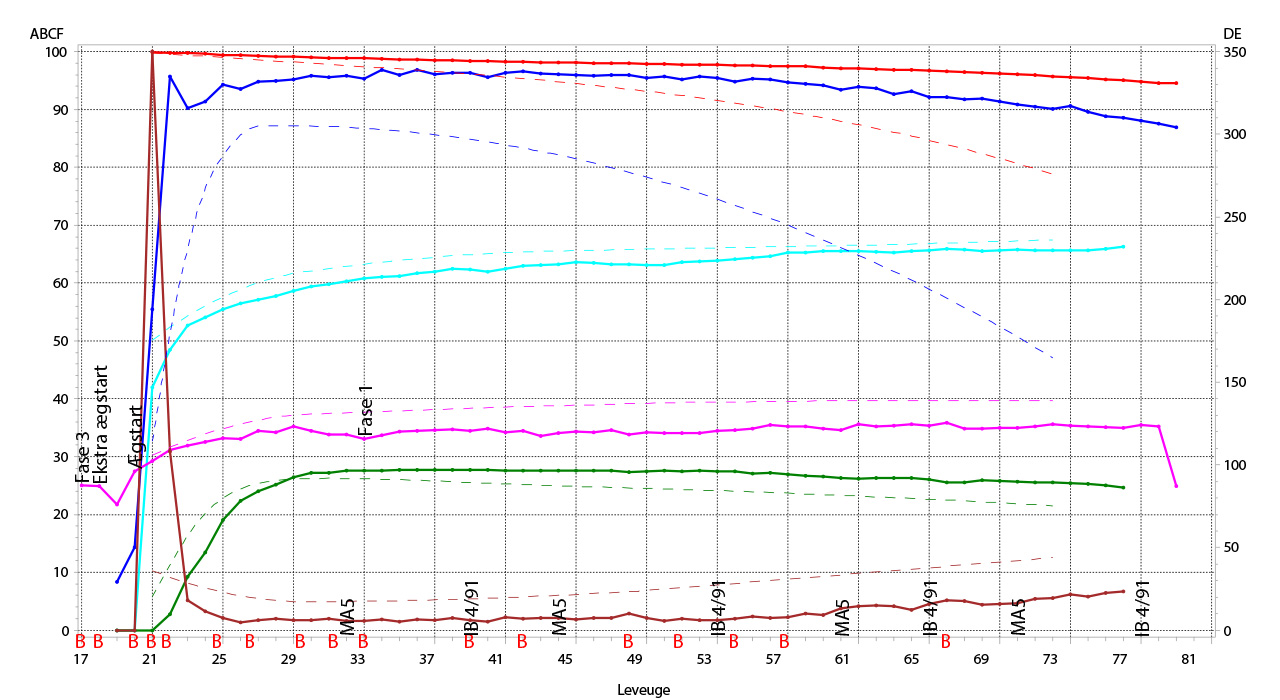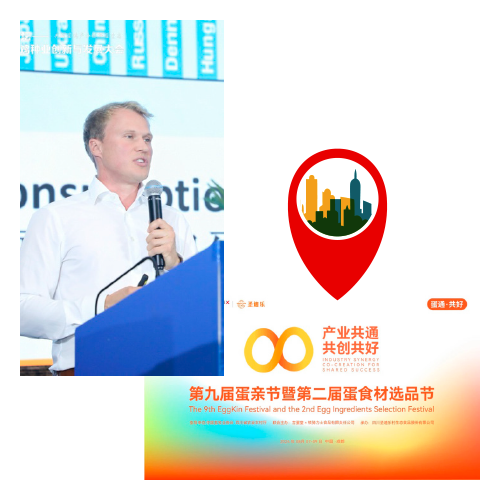CAGE FREE LAYERS – FROM A DANISH POINT OF VIEW
History – Figures from 2017In Denmark for the last five to six years, we have seen a change in the demand for table eggs – shifting from more than 50% of eggs coming from enriched cages to more and more eggs coming from alternative housing systems. Eggs from barn and organic production, in particular, have increased to the detriment of eggs from cage systems. This development is likely to continue and will be driven by the supermarket ban on selling table eggs from enriched cages from 2017/2018.
Many years of experience and excellent management, especially in organic production, show that today’s breeds are all very efficient and can be adapted to the housing system – no matter whether it is a house for cage layers or organic production. The pullets and hens need to be “trained” for each housing system.
Beak trimming facts – history of Denmark:
- Until 2013, all laying hens for enriched cages, barn and free-range production were debeaked. (beak trimming was performed on day-old chickens at the hatchery)
- From 2013, beak trimming was banned for enriched cages. In addition, one year later – from 1 July 2014 – beak trimming of day-old chicks for alternative egg production systems was also prohibited.
- Hens for organic production have never been beak trimmed in Denmark! Since 2003, pullets for organic production have been raised in organic systems and welfare screening was introduced by the authorities.
How to manage a “perfect” performance!
In accordance with animal welfare and efficiency, we all want our hens to perform well – no matter whether they are kept in enriched cages or in alternative housing systems. Healthy birds with a good feather cover and the “right shape” are essential for animal welfare as well as high egg numbers, correct feed consumption and good egg quality etc. Laying hens in “good shape” are calm and curious.
Figure 2 shows an example of efficiency data from an organic flock that reports data to the Danish efficiency control programme according to the hen’s age in weeks (hen age is at the bottom of the fig): The figure shows high efficiency – due to:
- low mortality/high livability (red)
- very high egg yield (dark blue)
- development in egg weight (light blue) and high number of eggs in class M and L shown on the green line (highest egg price),
- low feed consumption (pink)
- low number of downgrades from packing station (brown)
The flock ends up at 79 weeks of age with a total egg number of 374 eggs per hen housed and an FCR at 128 g feed per pc egg, or 2.15 kg feed per kg egg mass. The curves in the figure show a persistent and consistent flock!
This farmer has often delivered fine production results. This is not due to luck but to hard work and excellent management! The farmer is systematic in his daily work and very regularly in inspection and stimulation (silage, oyster shells etc).

Figure 1. The images are from organic and barn production
Debeaked versus non-debeaked hens
Non-debeaked hens in enriched cages did not show any difference in behaviour, efficiency etc. compared with debeaked hens in enriched cages. Consequently, no aspect of management practice needed to be changed.
Possibly due to this, to a greater or lesser degree, we did not make any changes in the rearing, transfer and feeding strategy when beak trimming was banned in alternative housing systems. This was a mistake!
In the first years following the ban, we faced many challenges in managing non-debeaked hens. Many flocks became stressed from the beginning of lay and started feather pecking. This often led to higher mortality, lower egg numbers, increased feed consumption and poor egg quality due to the lack of feathers.
Fig 3 Pictures of some of the first flocks after the beak trimming ban showing stressed and feather pecked hens

Figure 2. Example of efficiency data from an organic flock
Experiences from Sweden and organic farming and in Denmark
Experience from organic egg production in Denmark and from barn production in Sweden on good management of alternative flocks with non-debeaked hens has clarified important management tools. Lots of work and a focus on management factors during the last few years have made things better, but there is still room for improvement!
Some important key factors on how to manage a flock – whether it is an organic flock or a barn or free-range production system seem to be clear. In general, one can claim that compared with cage housing systems, free roaming hens need a quick response in management!
Important key factors for success in egg production
One of the most important key factors (some will claim that it is the most important!) is rearing process, and thereby, the quality of the pullets! Quality means that the pullets should have been reared under the same conditions as in the laying house – they should be well developed and trained to jump and grip the perches and should have learned to sleep in the system. In addition, a pullet must have achieved the recommended bodyweight and uniformity.
It takes time to raise a flock of pullets well– which applies to all systems: barn, free-range or organic! A focus on every single stage in the life of the pullet is needed – from day-old chick until transfer to the hen house – following the recommendations from the breeding company and using our experience and “gut-feelings”. Management can be difficult to define, but if rearer farmers want to apply good management practice and intervene before anything goes wrong, they must spend time inside the house observing the birds! The farmer must check the chickens or pullets at least twice a day. Besides enabling a quick response, the birds will also be calmer if they get used to people inside the house.
Experience leads to a statement and conclusion in my opinion: You can get your pullets or layers to do almost whatever you want them to and they can get used to almost every type of environment, equipment, noise etc.: They just need to be trained!

Figure 3. First flocks after the beak trimming ban
I think this explains why we are quite successful with organic egg production in Denmark. The pullets are accustomed to a variety of different factors during the day from when they are young chickens such as changes in sunlight, roughage, outdoor area, noises etc. This makes them calmer and more robust.
As an example of how you can “train” your pullets, the following picture from an organic pullet rearing farm shows that many birds will use the outdoor area if they are used to it. At the time, the pullets were about 15 weeks of age and the farmer had opened the pop holes 3 minutes before the photo was taken!
As mentioned before, every organic hen in Denmark is raised using organic methods: meaning they have access to an outdoor area from 6-9 weeks of age (depending on time of the year). It shows the effect of devoting a lot of time to managing! It is difficult to define but easy to see the positive results of good management! The flock shown in the efficiency curves in figure 2 was actually raised at this farm, which simply emphasizes the value of pullets of excellent quality.

Figure 4. Organic pullet rearing farm
How to avoid undesirable bad behaviour
Factors of great importance on animal welfare and production:
- Pullet quality: good quality is one of the key factors for success in egg production.
- Feed and feed management. Chickens, pullets and hens may feel confident at any way and they must have fulfilled their nutrient need at all stages in their lives.
- Enrichment tools during the day: access to e.g. alfalfa balls, pecking stones, silage/roughage, straw
- An attractive outdoor area if hens are organic or free-range provides diversion and reduces stocking density inside the house
- Right climate and temperature: low levels of ammonia and the correct temperature give better air quality.
- Frequently inspect the flock for the presence of worms and red mites, as parasites cause high stress levels
Other factors can also greatly influence the behaviour and the welfare of the hens.
To secure high animal welfare and good performance, accounting for these factors is vital in the period from one day-old until slaughter.
Charlotte Frantzen Bjerg, Adviser, DLG/ Danaeg, Denmark







